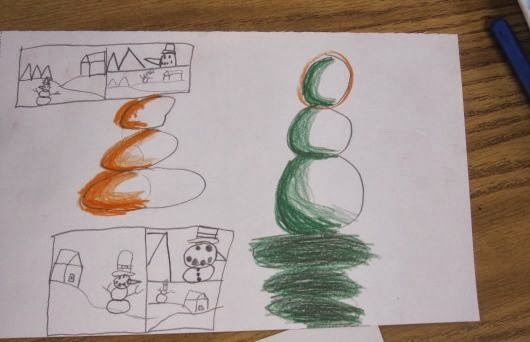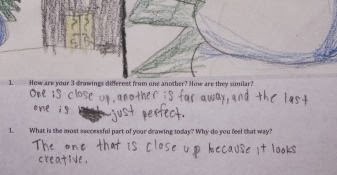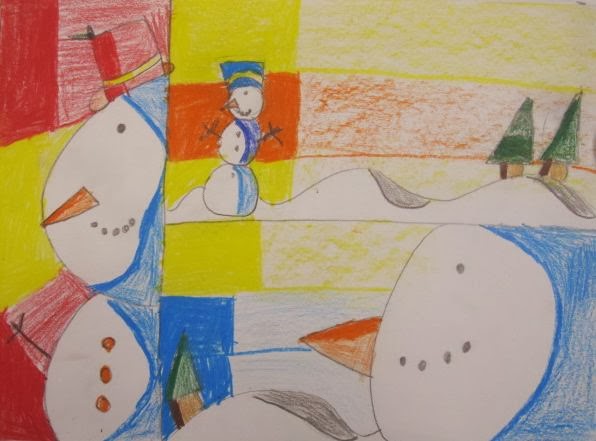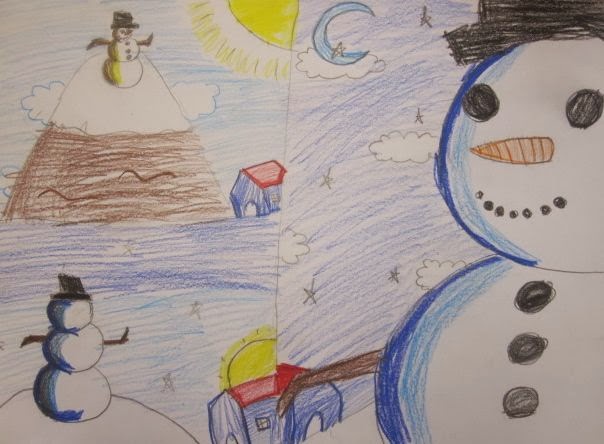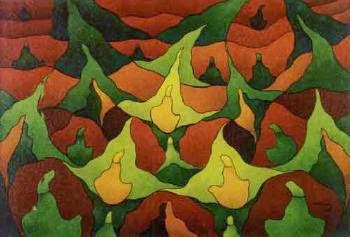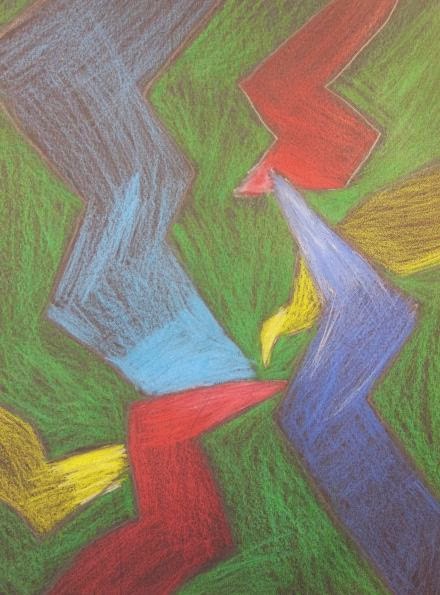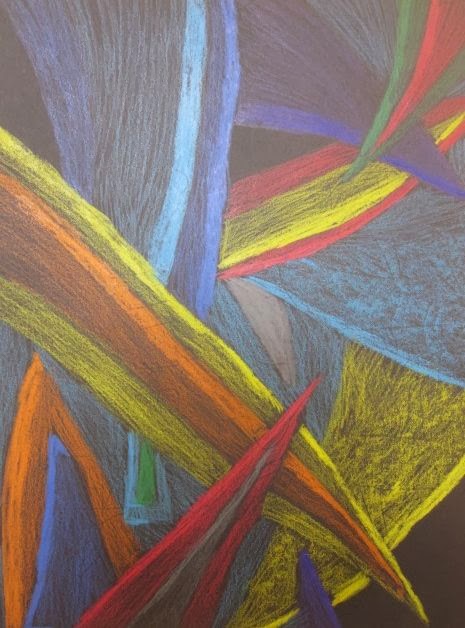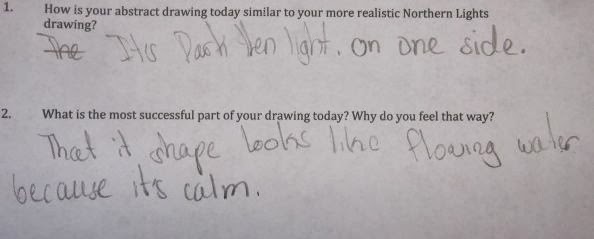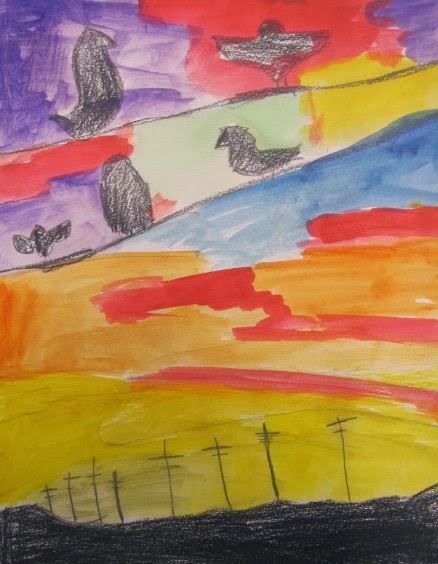There are times when a lesson, despite careful planning, just doesn't work and you suck it up and go with something else that addresses similar concepts and skills.
I'll post about that project soon, but I thought I would share what I switched to with the 4th graders this week because many more of the students are achieving visual success and comprehension with it.
After the first project failed, I turned to a point of view project that I had pinned from
Mrs. Knight over in Georgia. She did a great project with her 3rd graders that I thought I could springboard from.
I shared her images from Ansel Adams and discussed point of view with the students. How the same thing looks different from different distances or angles. I remind them that the concept is similar to point of view in reading and writing. They need to identify the author's point of view and when they write they are doing it from a certain perspective, too.
I also share the image below.
With this image I also stress the relationship of positive and negative shapes in art. This concept was introduced in the previous project we did together 4 weeks ago.
I then share some of Mrs. Knight's 3rd grade projects. We identify the positive and negative shapes, and we look at the different points of view students created. I then ask them if the snowmen look 3d or flat? They do look pretty flat, and I tell the students that this is where their projects will look different than the examples.
Our goal for the lesson is to create an image with 3 different points of view AND to have things in each point of view look 3d. The 4th graders have done a little bit of implied volume this year, but now we are going to start focusing on it in a few projects. I emphasize the use of light and shadow to make things look more real and 3d. I share with them examples of the process and product that I have done and then we are on our way.
1. practice shading
2. practice point of view concepts
3. draw final composition on larger paper
4. add color and shadows to each scene
5. complete project exit slip






